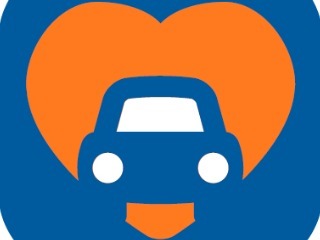How does Course Hero make money?
The company offers a freemium model, where users can pay to access more content and ask questions
Read more... Many years ago, my mother was buying a car from a dealership that had been on display for other people to look at and test drive. When she got the bill, she saw they had added something called a "destination fee," which was ridiculous since the car was already on the lot! Of course, she argued with them ("what did you drive it, 50 feet?") but I don't remember if she ultimately paid it or not.
Many years ago, my mother was buying a car from a dealership that had been on display for other people to look at and test drive. When she got the bill, she saw they had added something called a "destination fee," which was ridiculous since the car was already on the lot! Of course, she argued with them ("what did you drive it, 50 feet?") but I don't remember if she ultimately paid it or not.
The point of the story is that the car buying experience has long been broken. Nobody likes it, and it seems like everyone, ultimately, feels like they got ripped off, one way or another, to the point where around 40% of people who have bought a new car have regrets about the purchase.
Given those conditions, it's not all that surprising that people would gravitate toward a company like Carvana, which not only digitizes the process, but also promises to be more transparent about the process.
"We are transforming the used car buying experience by giving consumers what they want – a wide selection, great value and quality, transparent pricing and a simple, no pressure transaction. Each element of our business, from inventory procurement to fulfillment and overall ease of the online transaction, has been built for this singular purpose," the company wrote in its S-1 filing with the SEC, prior to its 2017 IPO.
"We provide a refreshingly different and convenient car buying experience that can save buyers time and money."
On the Carvana platform, consumers can research and identify a vehicle, inspect it using the company's vehicle imaging technology, obtain financing and warranty coverage, purchase the vehicle and schedule delivery or pick-up, from their desktop or mobile devices.
The company uses algorithms to optimize its inventory vehicles, inspect and recondition them on its “Carvana Certified” 150-point inspection process, and operate its own logistics network to deliver cars directly to customers as soon as the next day. Carvana has also rolled out vending machines for people to pick up their car.
The company has three revenue arms, the biggest being sales of its used vehicle sales directly to its customers through its website or app, which is recognized when the vehicle is either delivered or picked up.
In 2021, Carvana's revenue totaled $12.8 billion, an increase of 129% year-to-year, and $9.9 billion of that, or 77%, of that total came from uses car sales. That was a 107% increase from 2020. The company sold over 425,000 vehicles in 2021, a 75% year-to-year increase.
The company also makes money by selling vehicles, primarily from customers who trade-in their existing vehicles when making a used vehicle purchase, and which don't meet Carvana's quality standards to list and sell through its website, to wholesalers. This revenue is recognized when the vehicle is sold at auction or directly to a wholesaler.
In 2021, Carvana made $1.9 billion in revenue from this segment, a 331% increase, and 15% of total revenue.
Finally, there is what the company calls, "other sales and revenues," which includes the sales of automotive finance receivables it originates and sells to third parties, as well as commissions Carvana receives on vehicle service contracts.
This segment accounted for $1 billion in 2021, 8% of total revenue and a 160% increase year-to-year.
The company attributed its increase in revenue in 2021 to market conditions created by the pandemic, including higher vehicle prices from inflation, and more people wanting to do do their shopping, including for their cars, online.
"The current automotive retail environment is characterized by very high used vehicle prices compared to historical norms. The average market price, controlling for mix, for our typical car has increased by more than 30% since January 2021, an effect that is having an impact on affordability for the average used car buyer," the company wrote.
"This inflationary effect combined with Omicron appears to be broadly impacting independent used vehicle dealers. According to Cox Automotive, dealership used vehicle sales are down approximately 15-20% vs. 2021 through the first seven weeks of the year. Our continued growth in Q4 2021 and early Q1 2022 suggest we are continuing to significantly outperform the industry and gain market share."
Despite the increase in revenue, Carvana is still not profitable: it saw a net loss of $287 million in 2021, an improvement from $462 million in 2020. However, its gross profit per unit has increased every year, growing from $206 in 2015 to $3,252 in 2020. In 2021, gross profit per unit rose 39.5% to $4,537.
In its 2017 IPO, Carvana priced its stock at $15 a share, raising about $225 million. Its stock is now trading at $42.72 a share, up 184% from its IPO price.
(Image source: sec.gov)
The company offers a freemium model, where users can pay to access more content and ask questions
Read more...The company sells a premium version of its free product to parents, schools and districts
Read more...Initially a platform for renting textbooks, it now makes 90% of revenue from software subscriptiions
Read more...
